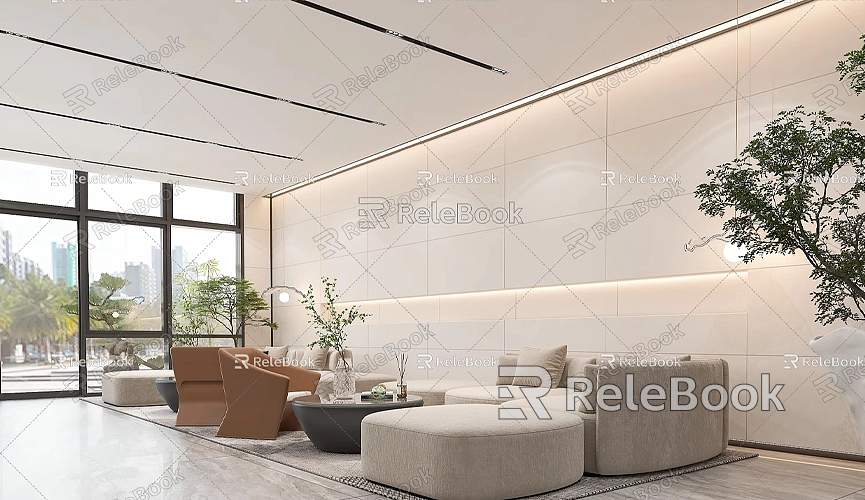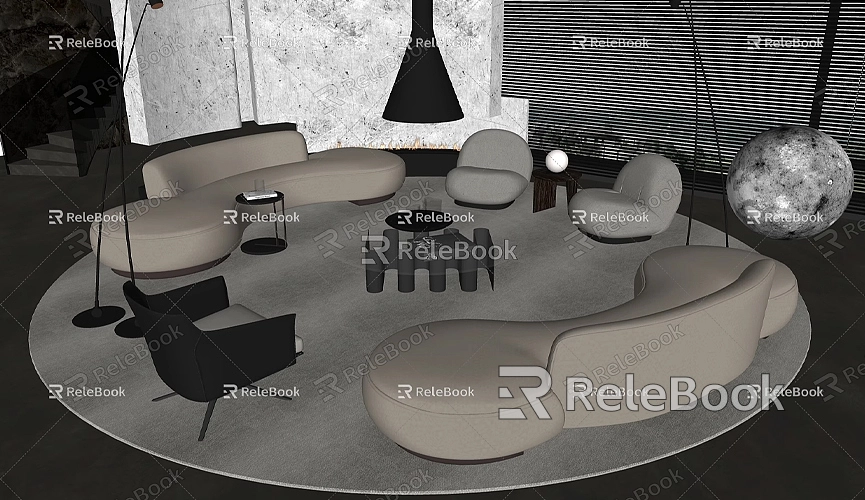How to Make SketchUp Model Hollow
When creating 3D models in SketchUp, there are times when you might need to transform a model into a hollow structure to meet specific design requirements. Applications such as creating lampshades, containers, building shells, or decorative structures often call for hollow models. Hollowing out a model not only saves material and reduces weight but also expands the possibilities for manufacturing and practical use. However, achieving this in SketchUp requires some familiarity with its tools and techniques. This article provides a comprehensive guide on how to make SketchUp models hollow, from basic operations to advanced tips, enabling you to master this essential modeling skill.
Why Make Models Hollow?
Making a model hollow offers numerous benefits in both design and practical applications. For architects, hollow walls or structures reduce building weight, improve energy efficiency, and allow space for utilities such as electrical wiring and plumbing. For industrial designers and manufacturers, hollow designs can save materials and lower production costs. In artistic projects, hollow models enhance visual impact and add complexity to the design.

In SketchUp, the process of hollowing a model involves adjusting its internal structure and thickness. This requires a good understanding of internal editing techniques, along with leveraging plugins and resources to optimize the workflow.
Basic Steps to Create Hollow Models
Creating a hollow model in SketchUp begins with carving out an internal space. Here are common methods for hollowing out models depending on their type and complexity.
Use the Push/Pull Tool to Create Thickness
The Push/Pull tool is one of the most commonly used modeling tools in SketchUp, making it easy to add thickness to a model and achieve a hollow effect. If you have a closed model, such as a cube or cylinder, you can follow these steps:
1. Select one of the model's faces.
2. Use the Push/Pull tool to push the face inward until the desired wall thickness is achieved.
3. Ensure that all edges and surfaces within the internal space are properly aligned and closed to avoid gaps.
Wall thickness is a critical factor to consider. Thin walls may lack durability during manufacturing, while overly thick walls may lead to unnecessary material usage. Adjust the thickness to suit your specific needs.
Optimize Shapes with the Offset Tool
The Offset tool is particularly useful for quickly creating parallel edges and defining inner and outer boundaries for a hollow structure. Here’s how to use it:
1. Select a face on the model.
2. Activate the Offset tool and drag inward to create a parallel inner edge.
3. Use the Push/Pull tool to push the inner face inward and create a hollow interior.
This approach works well for regular geometric shapes, such as rectangular prisms, cylinders, or basic polygonal models.
Efficient Techniques for Complex Models
For more intricate 3D models, such as those with curves or layered structures, basic tools alone might not suffice. In such cases, advanced techniques and plugins can simplify the hollowing process.

Separate Internal and External Structures with Groups and Components
Effectively utilizing groups and components in SketchUp can prevent unintended modifications to the outer shell while editing the internal structure. Here’s a step-by-step method:
1. Group the external shell of the model to protect it during editing.
2. Create a new group or component for the internal space.
3. Use tools like Push/Pull or other modeling techniques to design the hollow cavity within the internal group.
By isolating the interior and exterior, this method allows for efficient adjustments to complex models without affecting their outer appearance.
Use Plugins for Automatic Hollowing
For highly detailed models, SketchUp plugins can automate the hollowing process. Some recommended plugins include:
· Joint Push Pull: Allows simultaneous editing of multiple surfaces to create uniform wall thickness.
· Solid Inspector: Checks and repairs geometry errors, ensuring that hollow models are watertight and complete.
These plugins streamline the workflow and reduce the manual effort required to hollow out complex designs.
Enhancing Hollow Models with Materials and Textures
After hollowing out a model, enhancing its visual appeal with materials and textures can take it to the next level. SketchUp supports customizable materials and allows the import of high-quality texture maps to add realism.
Use High-Quality Textures for Detail
High-resolution textures can make hollow models more lifelike, such as brick patterns, metallic finishes, or transparent glass. If you need premium 3D textures and HDRI maps, you can download them for free from https://textures.relebook.com. These resources can be applied directly in SketchUp to enhance the detail and realism of your model.
Apply Transparent Materials to Reveal Interiors
Transparent materials are ideal for showcasing the internal structure of a hollow model. Adjusting transparency settings allows viewers to see through the model, which is particularly useful for architectural or industrial designs.
Optimizing Hollow Models for Performance
Hollow models often contain additional geometry and details, which may impact SketchUp’s performance, especially for large or complex projects. Consider these optimization tips:
· Reduce Unnecessary Geometry: Simplify overly detailed areas and remove unnecessary edges to improve performance.
· Use Proxy Models: Proxy models display simplified geometry during editing, loading full details only during rendering. This reduces system load and speeds up the workflow.
Rendering Hollow Models for Realistic Effects
The final presentation of a hollow model often depends on high-quality rendering. Rendering tools can simulate light interacting with the model’s interior and exterior, creating dynamic shadows and reflections.
· Simulate Realistic Lighting: Rendering plugins like V-Ray and Enscape can accurately replicate light entering hollow models, producing natural lighting effects.
· Enhance with HDRI Maps: Incorporating HDRI maps improves ambient lighting and creates realistic environments. Download HDRI maps from https://textures.relebook.com to enrich your hollow models with professional lighting.
Adding Detail with 3D Resources
Beyond light and texture, incorporating additional 3D assets enhances the overall design of hollow models. For example:
· Add pipes, lighting fixtures, or internal structures to hollow walls in architectural designs.
· Display mechanical components or intricate mechanisms in industrial models.
You can find a wide range of high-quality 3D models at https://3dmodels.relebook.com, including furniture, decorative items, and industrial parts to enrich your designs.
Transforming SketchUp models into hollow structures is an invaluable skill for architects, designers, and 3D artists. By leveraging SketchUp’s tools and plugins, you can efficiently convert solid models into hollow ones while maintaining control over thickness, geometry, and design integrity. Combining high-quality textures, HDRI maps, and detailed 3D resources further elevates your creations, ensuring professional results.
For premium textures and HDRI resources, visit https://textures.relebook.com. To access top-notch 3D models, explore https://3dmodels.relebook.com. With these tools and resources at your disposal, creating impressive hollow models in SketchUp has never been easier.

